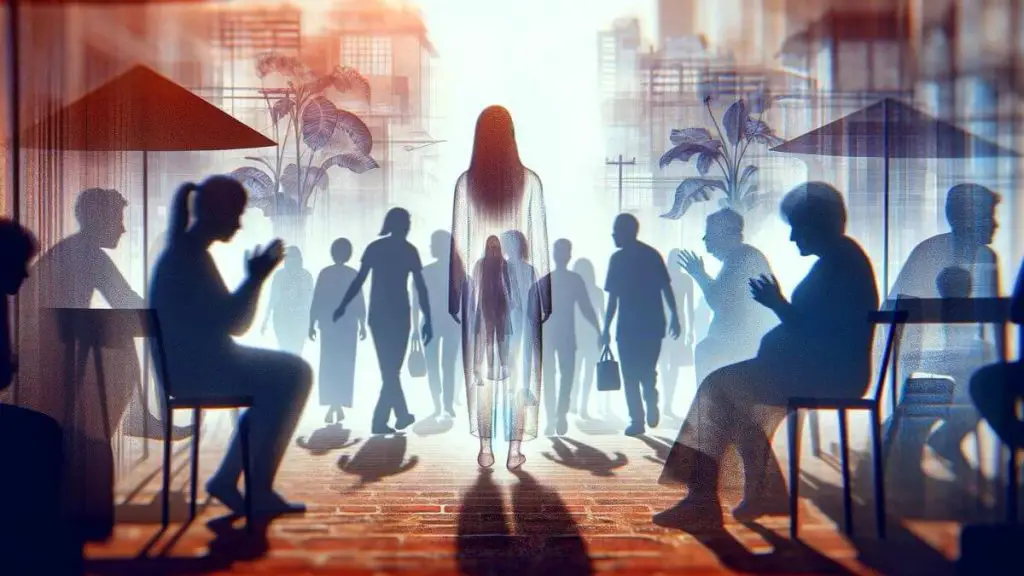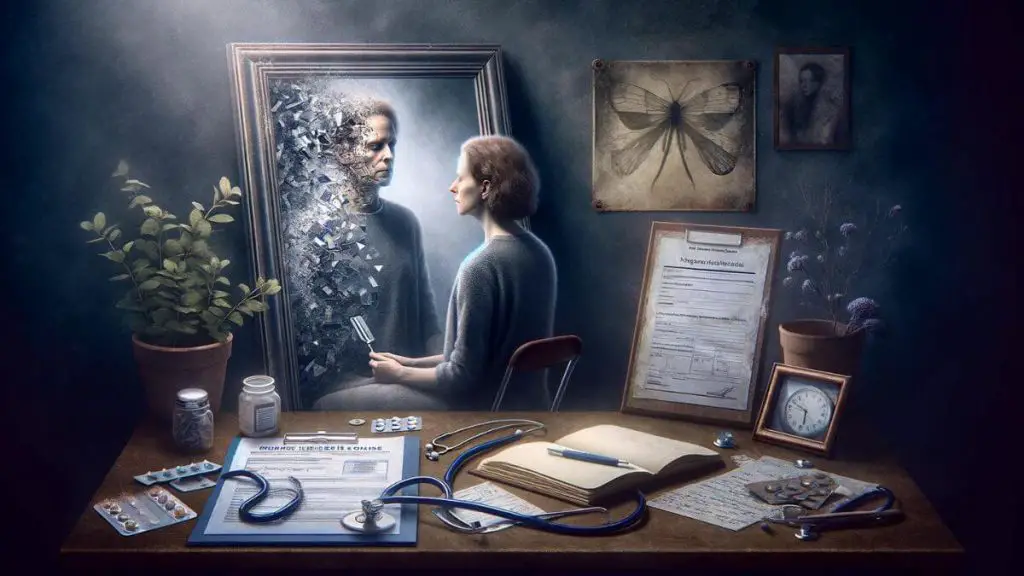What Hurts More Than a Chronic Illness?
Living with a wife battling endometriosis has taught me firsthand what hurts more than a chronic illness. The physical pain she endures is excruciating, but it’s the emotional toll that cuts deepest, seeing her struggle and feeling powerless to ease her suffering.
So, what hurts more than a chronic illness?
While chronic illness brings physical pain, the emotional toll on loved ones can be equally devastating. Enduring the suffering of a partner with conditions like endometriosis can leave caregivers feeling helpless and emotionally drained.
Scroll down to explore the profound impact of caregiving and the resilience it fosters.
What Hurts More Than a Chronic Illness?
Have you ever wondered what hurts more than a chronic illness?
As the husband of a courageous woman battling endometriosis and fibromyalgia, I have witnessed firsthand the invisible battles waged behind closed doors.
These battles aren’t just about the physical pain, which is immense, but about something deeper, more pervasive, and often overlooked. The emotional and psychological scars that come with these conditions can be just as debilitating as the physical symptoms. In this journey together with my wife, I’ve come to realize that the agony of misunderstanding and isolation can cut deeper than the sharpest pain.
If you’ve ever felt misunderstood, alone, or just weary from the weight of your invisible battles, this article is for you. Let’s explore together the unseen struggles that accompany chronic illness and find solace in shared experiences.
17 Examples of What Hurts More Than a Chronic Pain
Beyond the physical pain of chronic illness, deeper wounds arise from isolation, dismissal, and misunderstanding. Emotional struggles like depression, anxiety, and identity crises often exacerbate the suffering, making the invisible aspects of chronic conditions profoundly impactful.
As the partner of a remarkable woman facing the daily challenges of chronic illness, I’ve seen the layers of struggle that extend beyond the physical pain. These experiences are not just about the bodily discomfort but also about the profound emotional and psychological battles that often go unnoticed.
Here are my 17 examples of what hurts more Than a chronic illness and chronic pain based on my wife’s personal experiences living with stage 4 endometriosis and fibromyalgia disorder:
- Isolation
- Invisibility
- Dismissal
- Guilt
- Anxiety
- Depression
- Grief
- Financial strain
- Relationship strain
- Identity crisis
- Chronic fatigue
- Fear of stigma
- Lack of control
- Educating others
- Invalidation
- Career impact
- Loss of intimacy
Let’s delve into the first one – isolation…
Isolation
Isolation often exacerbates the suffering associated with chronic illness, becoming a pain more profound than the physical symptoms themselves. It emerges from the disconnect between sufferers and their social, familial, and professional circles, deepening the emotional and psychological impact of their condition.
- Social Withdrawal: Limited physical capacity can lead to declining social invitations, gradually isolating the individual from their support network.
- Misunderstanding: Friends and family may not fully comprehend the extent or nature of the pain, leading to feelings of alienation.
- Professional Isolation: The inability to consistently participate in work or career-related activities can further isolate the individual from a significant part of their identity.
From my perspective, watching my wife grapple with isolation has been heart-wrenching. As her world shrinks, so does part of mine. I see her struggle with the desire to connect and the physical inability to keep up with social expectations, which only deepens her sense of isolation.
This not only affects her but also places a strain on our relationship, as we navigate this reduced social sphere together, trying to find new ways to connect with the world and each other.

Invisibility
The invisibility of chronic illness can be more debilitating than the physical pain itself, as it leads to a profound misunderstanding and lack of empathy from others. This invisibility masks the true extent of the sufferer’s daily challenges, making their struggle even more isolating.
- Lack of Visible Symptoms: Chronic illnesses often don’t have outward signs, leading others to underestimate the severity of the condition.
- Invalidation: The absence of physical markers can result in others questioning the legitimacy of the pain, adding emotional distress to physical suffering.
- Internal Struggle: The sufferer may feel compelled to “prove” their illness, which exacerbates stress and can worsen symptoms.
Seeing my wife’s struggle with the invisibility of her conditions is incredibly challenging. To the outside world, she often appears “fine,” which couldn’t be further from the truth.
This disparity between her outward appearance and internal experience not only invalidates her struggle but also places an undue burden on her to constantly justify her condition.
As her partner, it’s painful to witness her fight for understanding and validation, and it’s a stark reminder of the vast gap between perception and reality in the realm of chronic illness.
Dismissal
The dismissal by others, particularly by medical professionals, can often be a more harrowing experience than the physical symptoms of chronic illness itself. This dismissal can lead to a significant delay in receiving appropriate care and support, exacerbating the sufferer’s condition and sense of isolation.
- Lack of Validation: Being told that the pain is “all in your head” or not as serious as claimed invalidates the person’s experience and can lead to self-doubt.
- Barrier to Treatment: Dismissal by healthcare providers can prevent timely and effective treatment, prolonging suffering.
- Emotional Toll: Constantly having to advocate for oneself in the face of skepticism is emotionally exhausting and can lead to feelings of hopelessness.
Witnessing my wife face dismissal from those who should be her staunchest allies in her battle against chronic illness is infuriating and disheartening.
Each time she’s waved off with a prescription for rest or an implication that she’s exaggerating, I see the light dim a little more in her eyes.
It’s not just her physical pain that goes untreated; it’s the feeling of being unheard and unbelieved that cuts the deepest, leaving scars on both our hearts as we navigate this dismissive landscape together.
Guilt
The guilt associated with chronic illness, especially concerning one’s perceived inadequacies or inability to fulfill expected roles, can be more crushing than the physical symptoms themselves. This guilt often stems from not being able to participate in activities or meet the responsibilities that one used to handle effortlessly.
- Role Changes: Feeling guilty for not being able to contribute as before, whether in familial, social, or work contexts.
- Dependency: The guilt that comes from an increased reliance on others for basic needs or daily tasks.
- Impact on Loved Ones: The perception that one’s illness is a burden to family and friends can intensify feelings of guilt.
Watching my wife grapple with guilt is heart-wrenching. She often apologizes for things beyond her control, like canceling plans last minute or needing help with tasks she once did independently. I see her internal struggle, her wish to be the partner, friend, and family member she feels she ought to be, colliding with the reality of her condition.
This guilt doesn’t just affect her; it pains me to see her so hard on herself, knowing that her health is not something she chose or can will away. It’s a shared burden, one that requires constant reassurance and understanding as we navigate this journey together.
Anxiety
Anxiety about the future and the management of chronic illness can be more overwhelming than the physical symptoms themselves. The uncertainty surrounding the progression of the condition, potential treatments, and their impacts on daily life can lead to a constant state of worry.
- Uncertainty about Health: Concerns about how the illness will progress and the potential for worsening symptoms.
- Treatment Anxiety: Anxiety over side effects of medications, the effectiveness of treatments, and the possibility of surgery.
- Life Planning: Difficulty making future plans, both short-term and long-term, due to unpredictable health conditions.
Seeing the shadow of anxiety constantly looming over my wife is deeply unsettling. She worries about the trajectory of her illness, the next flare-up, and how it will affect our plans and dreams.
My wife’s anxiety is contagious; it seeps into our daily lives, making even small decisions seem monumental due to the myriad of what ifs. As her partner, I find myself in a balancing act, trying to provide comfort and maintain a sense of normalcy, all the while grappling with my own concerns about our future together.
Depression
Depression, stemming from the relentless battle with chronic illness, can overshadow even the most severe physical symptoms. The persistent pain and limitations can erode one’s sense of joy and hope, leading to a profound sense of despair.
- Loss of Enjoyment: Inability to find pleasure in activities once loved due to pain or fatigue.
- Feeling of Hopelessness: A pervasive sense that the situation won’t improve, leading to despair.
- Social Withdrawal: Pulling away from friends and family, further deepening feelings of isolation and loneliness.
Witnessing my wife succumb to bouts of depression under the weight of her illness is one of the hardest aspects for me. The vibrancy and spirit she once radiated seem to fade during these times, replaced by a palpable sense of hopelessness that is difficult to penetrate.
It’s not just her battle; it becomes ours, as I strive to lift her spirits while grappling with my own feelings of helplessness and sorrow over the relentless nature of her condition.
Grief
Grief over the loss of one’s previous, healthier self can be as debilitating as the physical symptoms of chronic illness. This mourning process for the life and abilities lost can deeply affect one’s emotional well-being.
- Identity Loss: Struggling with changes in self-identity and self-worth as a result of the illness.
- Mourning Past Activities: Grieving for hobbies, careers, and social activities that are no longer possible.
- Adjusting Expectations: The difficult process of redefining what is achievable and setting new, realistic goals.
Observing my wife grapple with grief has been an eye-opening and heartrending experience. She mourns not just for the health she lost but for the dreams and plans that seem increasingly out of reach.
It’s a sorrow that we share, as we both come to terms with the new realities of our life together, adjusting our hopes and expectations to accommodate the uninvited presence of her chronic illness.

Financial strain
The financial strain induced by chronic illness often exacerbates the emotional and psychological burden, sometimes proving more distressing than the physical symptoms themselves. The costs of treatments, medications, and potential loss of income can create a significant financial burden.
- Medical Expenses: High costs of treatments, medications, and ongoing care that may not be fully covered by insurance.
- Reduced Income: Inability to work or reduced working hours can significantly impact household income.
- Additional Costs: Unanticipated expenses such as travel for medical appointments or modifications to the home for accessibility.
Witnessing the financial toll that my wife’s illness has taken on our lives adds another layer of stress to our already challenging situation.
The relentless accumulation of medical bills, coupled with her inability to work as much as she once did, strains our finances and forces us to make difficult choices about her care and our future.
It’s a constant reminder of the far-reaching impacts of chronic illness, extending beyond physical and emotional health to touch every aspect of our lives.
Relationship strain
The strain chronic illness places on relationships can be more challenging than the physical symptoms, affecting emotional bonds and communication.
- Caregiver Stress: The responsibilities and emotional toll on the partner or family members can strain relationships.
- Misunderstanding and Frustration: Differences in understanding the illness and its impact can lead to frustration and conflict.
- Changed Dynamics: Shifts in roles and dependencies can alter the dynamic of a relationship, sometimes leading to resentment or distance.
Seeing the impact of my wife’s illness on our relationship is profoundly difficult.
The shift in our dynamics, from partners to patient and caregiver, introduces challenges we never anticipated. It’s a delicate balance, managing her needs and maintaining the strength of our bond, all while navigating the emotional turmoil that chronic illness brings into our lives.

Identity crisis
The identity crisis that often accompanies chronic illness can feel more confining than the physical limitations themselves, as individuals grapple with a sense of self that no longer aligns with their new reality.
- Redefining Self: Struggling to reconcile one’s self-image with the realities of living with a chronic condition.
- Loss of Independence: Feeling diminished by the increased reliance on others for daily tasks and decisions.
- Career and Social Role Changes: Adjusting to changes or losses in professional identity and social roles, which can shake one’s sense of purpose.
Watching my wife confront an identity crisis amidst her chronic conditions is heart-wrenching.
The person she was, and the person she sees herself as now, often clash, leaving her in a limbo of self-perception. This internal battle affects not just her but also our relationship, as we both navigate this changed landscape, trying to find solid ground in a reality that has shifted beneath our feet.
Chronic fatigue
Chronic fatigue, an all-encompassing exhaustion that often accompanies chronic illness, can be as debilitating as the physical pain, deeply affecting one’s quality of life.
- Pervasive Tiredness: A constant, overwhelming fatigue that doesn’t improve with rest.
- Limitation on Activities: Even basic daily tasks can become insurmountable, leading to a decreased ability to participate in life fully.
- Impact on Mental Health: The constant exhaustion can contribute to feelings of depression and anxiety, compounding the emotional toll of the illness.
Seeing the toll that chronic fatigue takes on my wife is incredibly hard.
It’s not just the tiredness but the way it steals her vitality, making even the simplest activities a struggle. This fatigue shadows our lives, limiting what we can do and experience together, and it’s a constant reminder of the invisible barriers her illness puts between us and the life we envisioned.
Fear of stigma
The fear of stigma associated with chronic illness can be more paralyzing than the illness itself, leading individuals to hide their suffering and avoid seeking support.
- Social Misunderstandings: Concerns about being judged or misunderstood by others because of the illness.
- Professional Repercussions: Anxiety about potential negative impacts on one’s career or workplace relationships if the illness becomes known.
- Internalized Stigma: The internal struggle with self-judgment and the fear of being perceived as weak or incapable.
Witnessing my wife’s battle with the fear of stigma is deeply disheartening. She often hesitates to share her struggles, worried about judgment or pity from others.
This fear isolates her further, making her carry the weight of her illness in silence.
It’s painful to watch her navigate this additional layer of challenge, and it motivates me to be her staunchest ally, advocating for understanding and compassion in every space we occupy.

Lack of control
The lack of control over one’s body and life due to chronic illness can be more distressing than the physical symptoms, leading to feelings of helplessness and frustration.
- Unpredictability: The erratic nature of symptoms can make daily planning difficult, impacting personal and professional life.
- Dependency on Treatments: Reliance on medications and therapies, with their efficacy and side effects, can exacerbate the feeling of losing autonomy.
- Decision-Making Challenges: Difficulty in making decisions due to the unpredictability of the illness and its impact on future plans.
Seeing my wife struggle with the loss of control over her own body and life decisions due to her chronic conditions is heartbreaking.
Her frustration with the unpredictability of her symptoms and the constant adjustments we have to make is a constant reminder of the relentless nature of her illness. It’s a struggle that affects us both, as we navigate the uncertainties of her condition together, trying to reclaim some semblance of control in the chaos.
Educating others
The constant need to educate others about one’s chronic illness can be as exhausting as the illness itself, requiring energy that may already be in short supply.
- Repeating Explanations: Continually explaining the condition and its impact to friends, family, and colleagues.
- Advocacy Work: The effort to advocate for oneself in medical, social, and professional settings can be draining.
- Misinformation Correction: Correcting misconceptions and providing accurate information about the illness to combat stigma and misunderstanding.
Observing my wife’s tireless efforts to educate those around us about her chronic conditions is both admirable and heartrending. Each explanation she offers, each myth she dispels, takes a toll on her already limited energy reserves.
It’s a relentless cycle of advocacy and education that she endures to foster understanding and compassion, a task that we often take on together to lighten the load and broaden the reach of her message.
Invalidation
The experience of invalidation, where one’s chronic illness and associated struggles are dismissed or belittifled by others, can be more disheartening than the physical symptoms of the condition.
- Doubt from Others: Encountering skepticism about the severity of one’s condition or the legitimacy of symptoms.
- Comparative Dismissal: Being told others have it worse or that one should be able to manage better.
- Emotional Minimization: Having one’s emotional and psychological struggles as a result of the illness diminished or ignored.
Witnessing the invalidation my wife endures, where her very real pain is questioned or brushed aside, is infuriating and saddening. Each time her experience is dismissed, it not only undermines her struggle but also adds an emotional burden to her already heavy load.
It’s a stark reminder of the lack of understanding and empathy that pervades perceptions of chronic illness, and it motivates me to stand firmly by her side, validating her experiences and advocating for the recognition she deserves.

Career impact
The impact of chronic illness on one’s career can be more devastating than the physical limitations, affecting one’s professional identity and financial stability.
- Career Limitations: Adjusting to reduced work hours or the inability to continue in a chosen profession.
- Professional Identity: The loss of a sense of self that was tied to professional achievements or roles.
- Financial Security: Concerns about the loss of income and the implications for future financial stability.
Seeing my wife navigate the treacherous waters of maintaining her career while managing her chronic illness is incredibly challenging.
The shifts in her ability to work and the adjustments we’ve had to make not only affect our financial situation but also her sense of self and accomplishment.
It’s a multifaceted struggle that adds another layer of complexity to our lives, as we work together to find a new balance and redefine success in the context of her health limitations.
Loss of intimacy
The loss of intimacy and changes in sexual relationships due to chronic illness can be deeply affecting, perhaps even more so than the physical symptoms, altering the dynamics of personal relationships.
- Physical Limitations: Pain and fatigue can limit physical intimacy, causing distress and disconnect.
- Emotional Strain: The emotional toll of chronic illness can affect desire and emotional closeness.
- Communication Challenges: Navigating changes in intimacy can be difficult, requiring open and sensitive communication.
Experiencing the impact of my wife’s chronic illness on our intimacy and sexual relationship is deeply personal and complex. It’s not just about the physical aspects; it’s the emotional distance that can emerge when she’s in pain or exhausted.
We’ve had to learn new ways of connecting and expressing our affection, constantly communicating and adapting to maintain our bond.
It’s a delicate balance, one that requires understanding, patience, and a commitment to grow together through these challenges.
Conclusion on What Hurts More Than a Chronic Illness
Okay, let’s summarise what hurts more than a chronic illness, based on my wife’s personal experiences with endometriosis and fibromyalgia…
Navigating the turbulent waters of chronic illness alongside my wife has been an eye-opening journey, one that has reshaped our lives in ways we never imagined. The physical symptoms, as daunting as they are, have become just one piece of a much larger puzzle.
The emotional and psychological toll, the strain on our relationship, the financial pressures, and the impact on our sense of identity and future plans have been equally challenging, if not more so.
Each of the aspects we’ve explored—ranging from the isolation and invisibility of her condition to the frustration of being dismissed and invalidated, the guilt and anxiety, the deep-seated fear of stigma, the relentless battle for control, the exhaustive need to educate, and the profound loss of intimacy—has added layers of complexity to our struggle.
These are not just her battles; they are ours, intertwined with the fabric of our life together.
What I’ve come to realize is that the journey through chronic illness is as much about finding new paths to connection and understanding as it is about managing symptoms.
It’s about redefining success, reimagining our future together, and rediscovering joy in the altered landscape of our lives. It requires resilience and a depth of communication we hadn’t known before, a constant negotiation between our hopes and the reality of our situation.
In sharing our story, my hope is to illuminate the often unseen struggles that accompany chronic conditions and to foster a deeper understanding and empathy for those navigating this path. For those who are on a similar journey, know that you are not alone.
The road may be rough and the challenges daunting, but there is strength in shared experiences, in the bond formed through adversity, and in the love that persists through the trials of chronic illness.
if you have your own story on what hurts more than a chronic illness, please share it in the comments section below.
Thank you.


About Me
Hi, I’m Lucjan! The reason why I decided to create this blog was my beautiful wife, who experienced a lot of pain in life, but also the lack of information about endometriosis and fibromyalgia for men…
